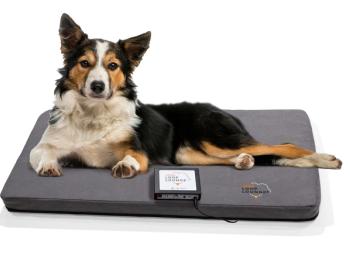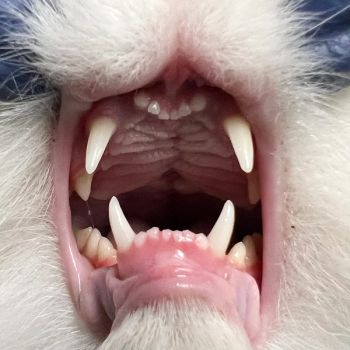
Research Updates: Spinal fractures and luxations: Most common causes, most common outcomes
The results of this study provide support for various treatment strategies based on clinical presentation, owner finances, and the clinician's competency.
In this review of cases treated at the University of Guelph's Ontario Veterinary College, the medical records of 11 cats and 84 dogs treated for spinal injury between 1995 and 2005 were reviewed. Vehicular trauma was the most common (60 cases) cause of the spinal fracture or luxation. Lesions occurred most frequently between T3 and L3 (54 cases) and L4 and L7 (36 cases).
Joseph Harari
Thirty patients with a median neurologic score indicating a lack of deep pain perception were euthanized without treatment. Twenty-eight ambulatory patients with a median neurologic score indicating proprioceptive deficits or ataxia were treated with cage confinement and exercise restriction and, in three cases, splinting; they were discharged with a median neurologic score similar to that at presentation. The median hospitalization for these animals was three days. Twenty-seven nonambulatory and 10 ambulatory patients underwent surgery that involved various techniques. The median neurologic grade of surgical patients improved by one point at discharge, and the median hospital stay was six days.
A nearly fourfold increase in the complication rate was noted between surgical (27%) and nonsurgical (7%) patients. The authors concluded that patients with deep pain perception before surgery and those with voluntary motor function treated conservatively have a good prognosis for recovery.
COMMENTARY
Spinal trauma is often seen in veterinary practice. Most injuries are related to vehicular trauma and can affect any portion of the vertebral column. Treatments are divided into surgical and nonsurgical categories, and, in general, most clinicians would argue for surgical decompression and stabilization for animals with unstable lesions, worsening neurologic status, and constant pain.
The results of this study provide support for various treatment strategies based on clinical presentation, owner finances, and the clinician's competency. The absence of deep pain portends a poor prognosis; however, the authors fail to describe the timing of the neurologic evaluation and any previous use of intravenous fluids, corticosteroids, nonsteroidal anti-inflammatory medications, or analgesics. Furthermore, reporting the costs of conservative and surgical treatments would have been illuminating for veterinarians and clients.
Bruce CW, Brisson BA, Gyselinck K. Spinal fracture and luxation in dogs and cats. A retrospective evaluation of 95 cases. Vet Comp Orthop Traumatol 2008;21(3):280-284.
The information in "Research Updates" was provided by Veterinary Medicine Editorial Advisory Board member Joseph Harari, MS, DVM, DACVS, Veterinary Surgical Specialists, 21 E. Mission Ave., Spokane, WA 99202.
Newsletter
From exam room tips to practice management insights, get trusted veterinary news delivered straight to your inbox—subscribe to dvm360.






